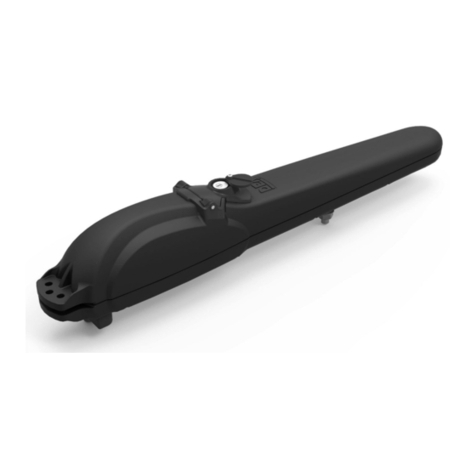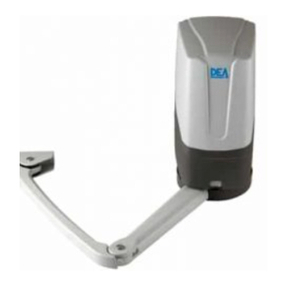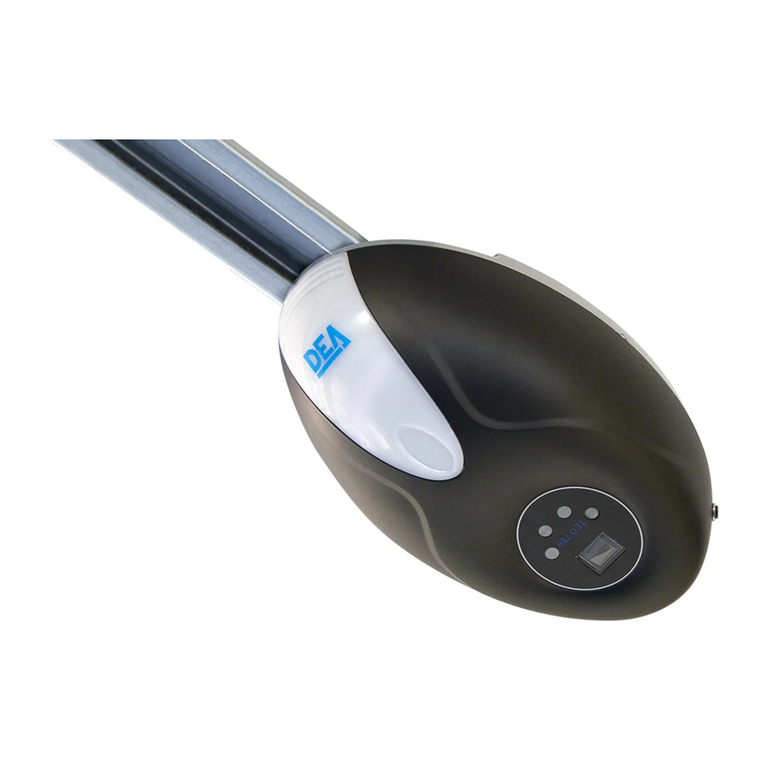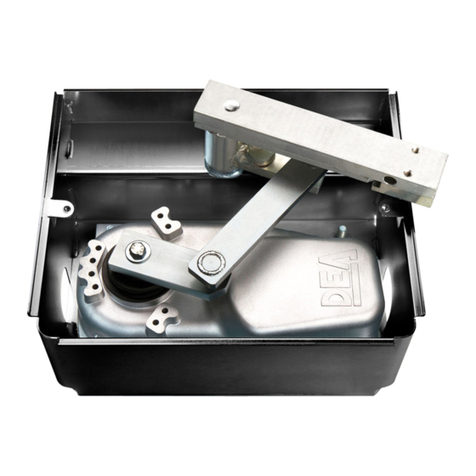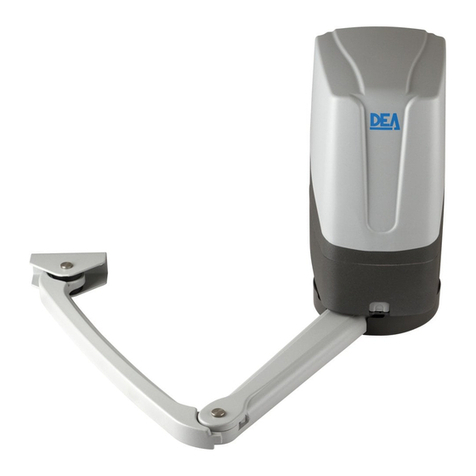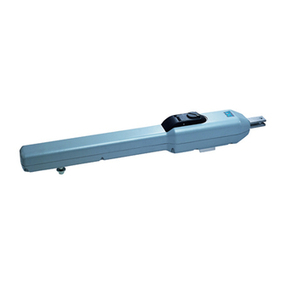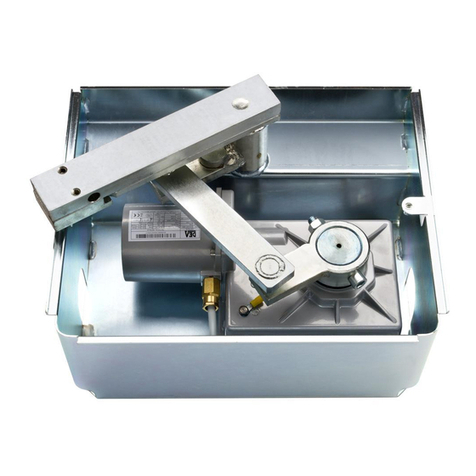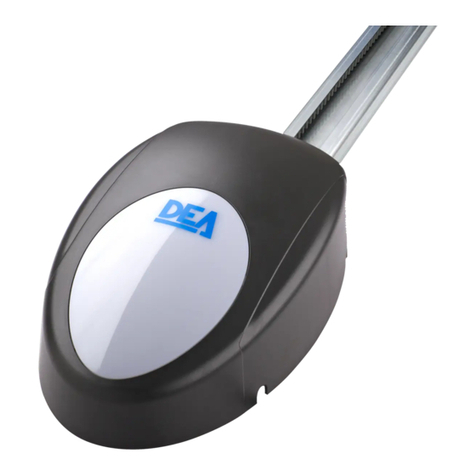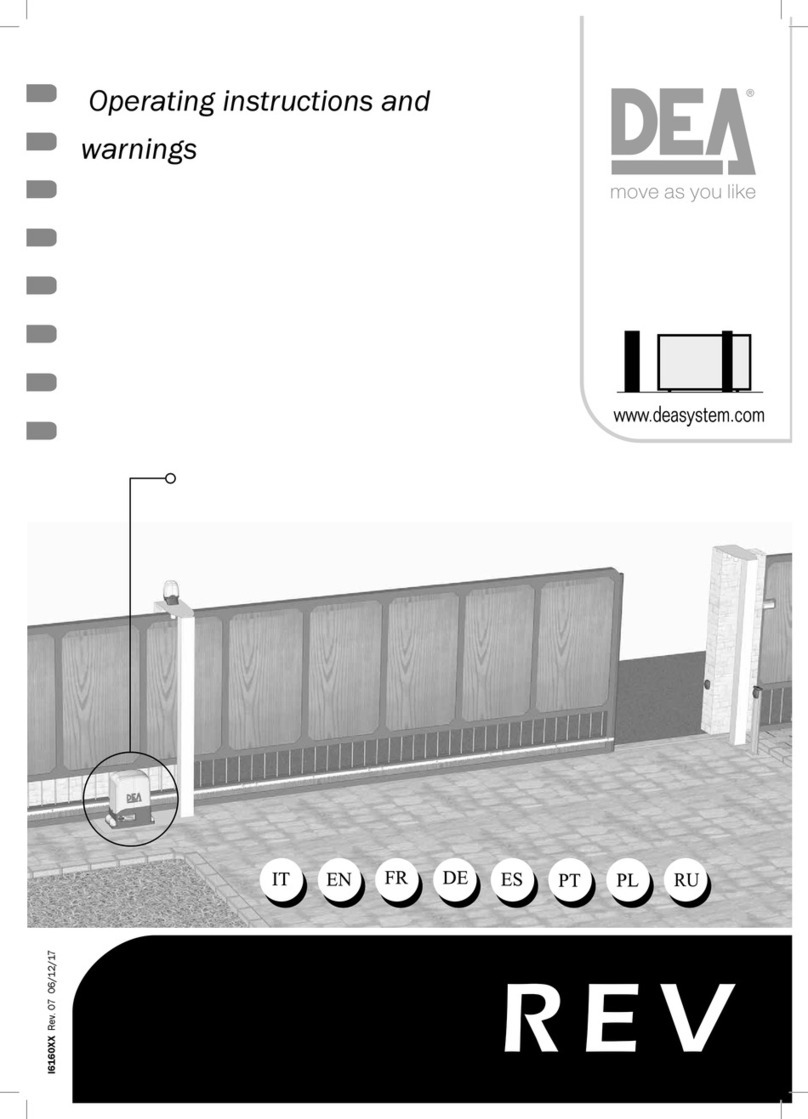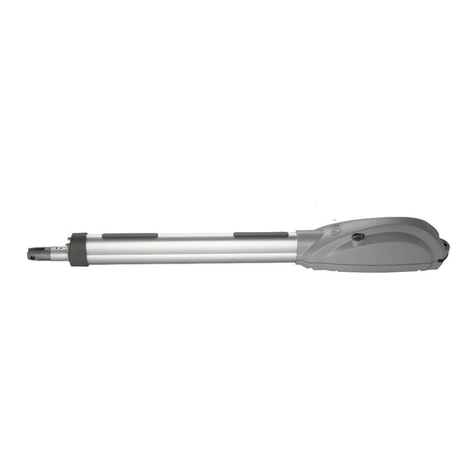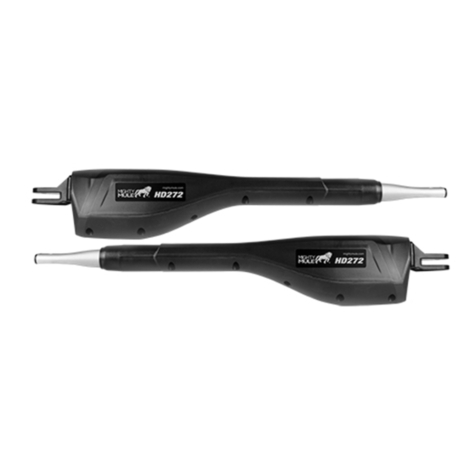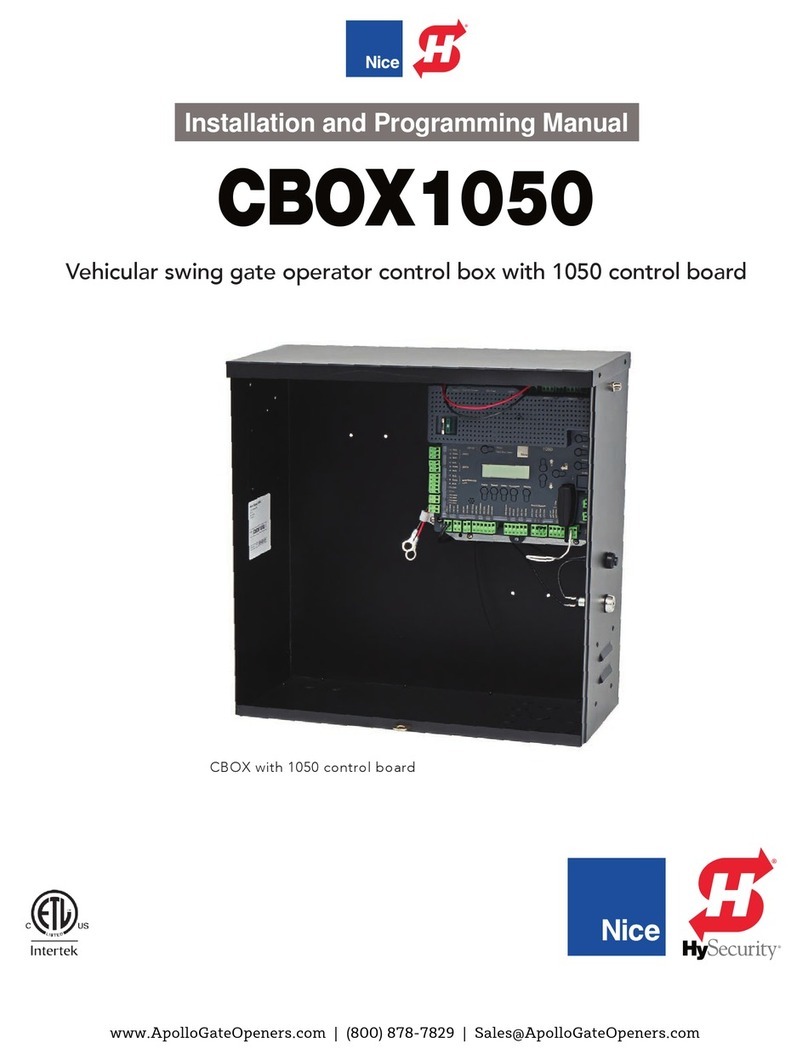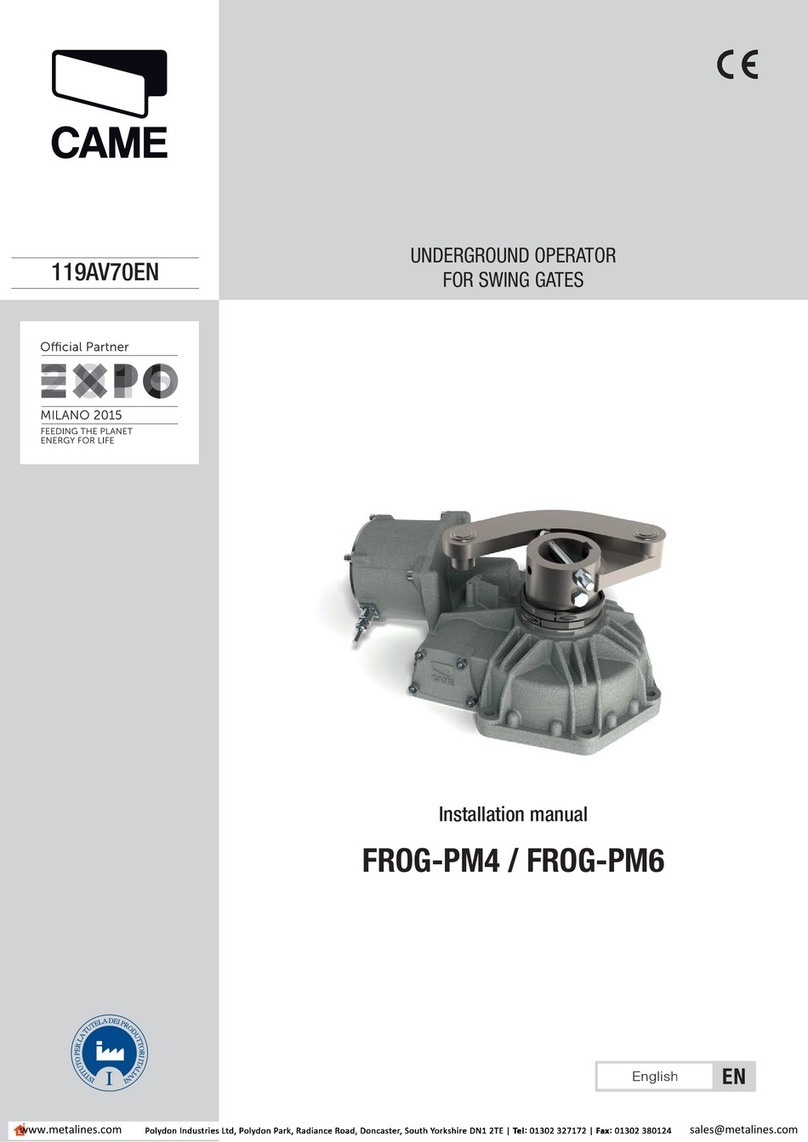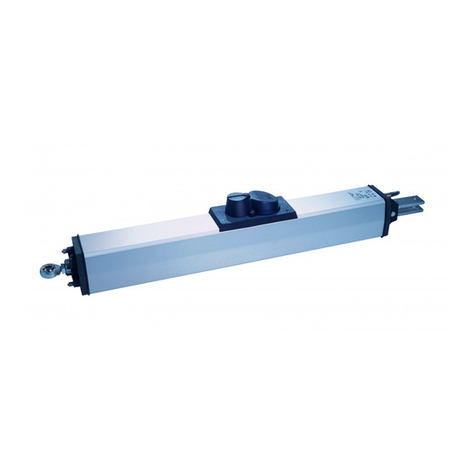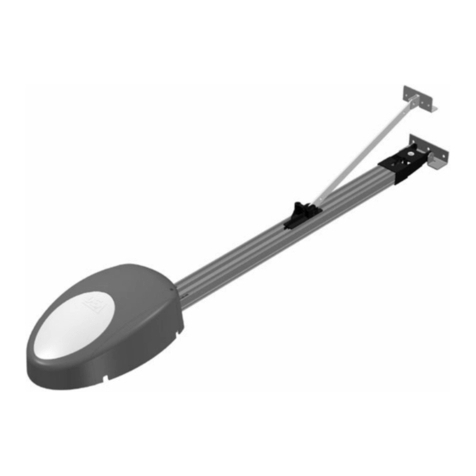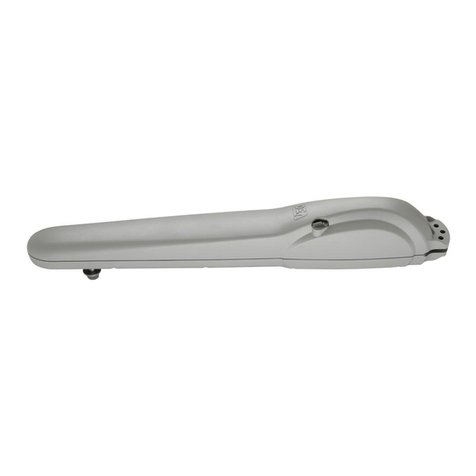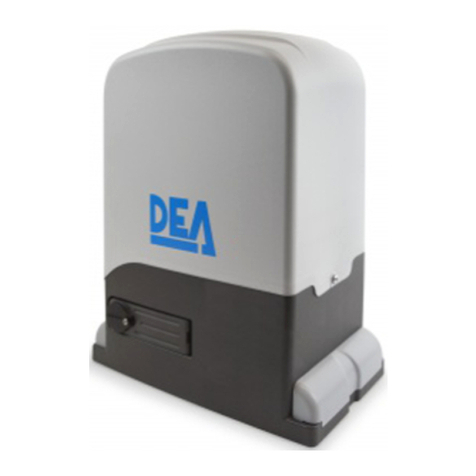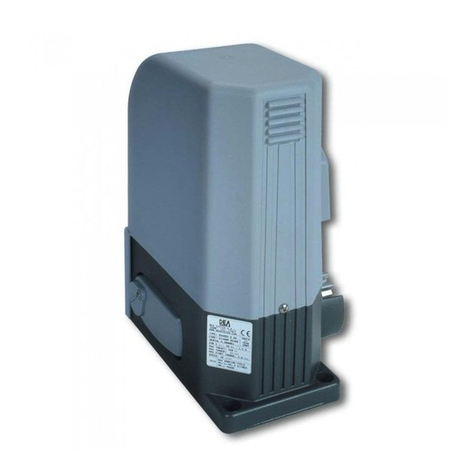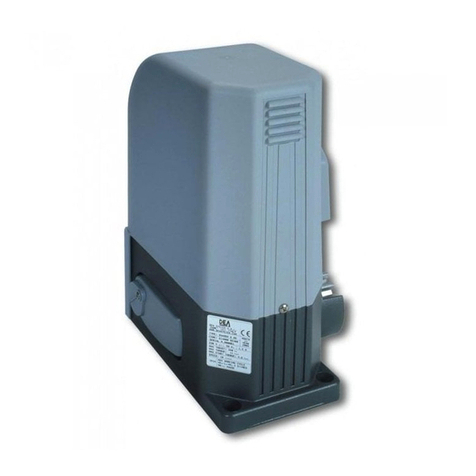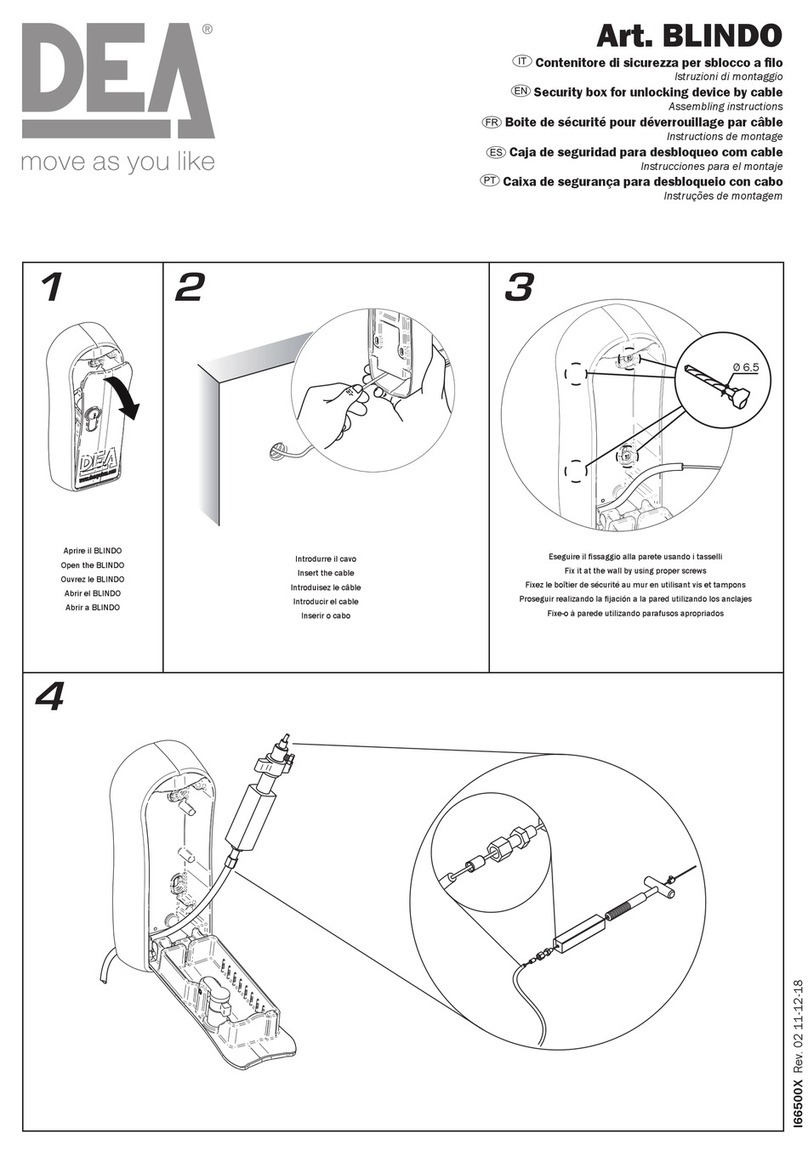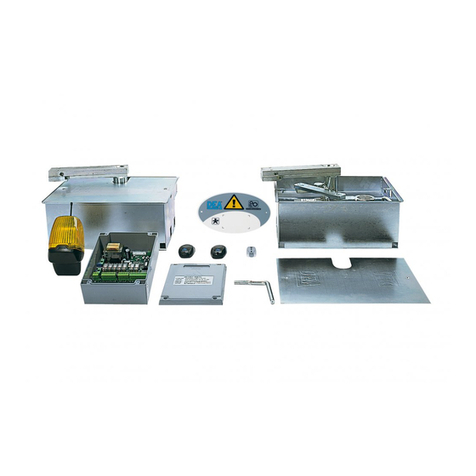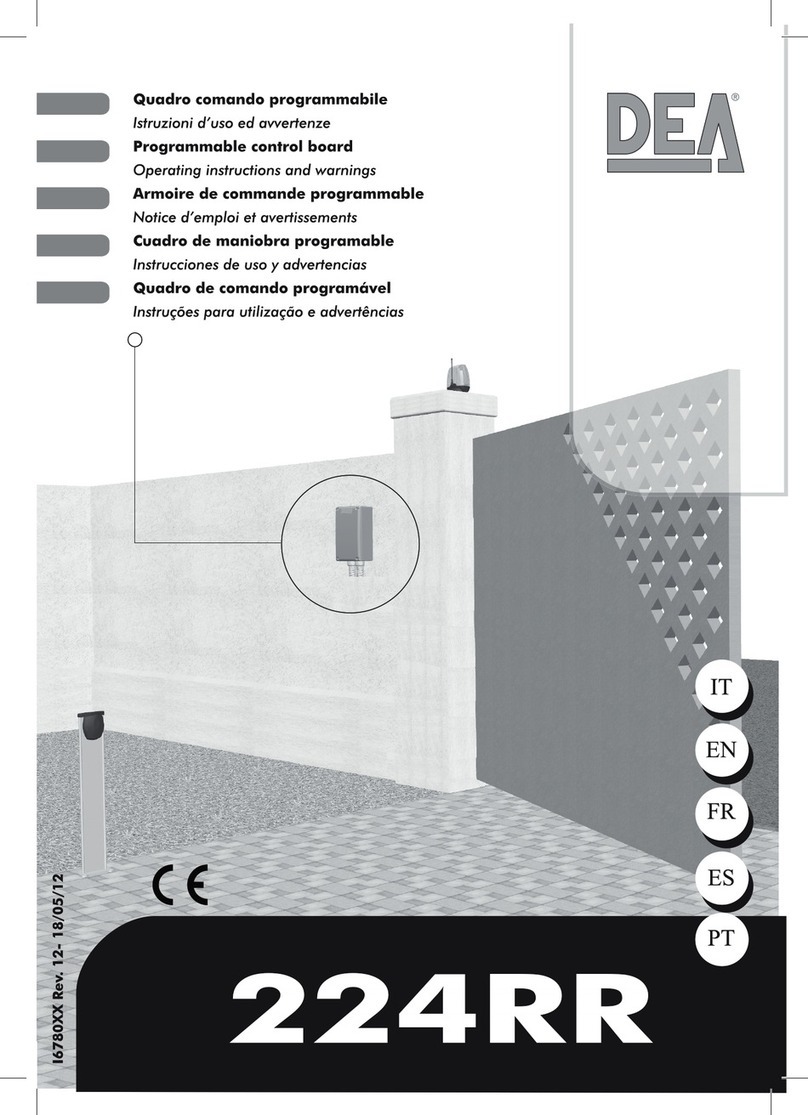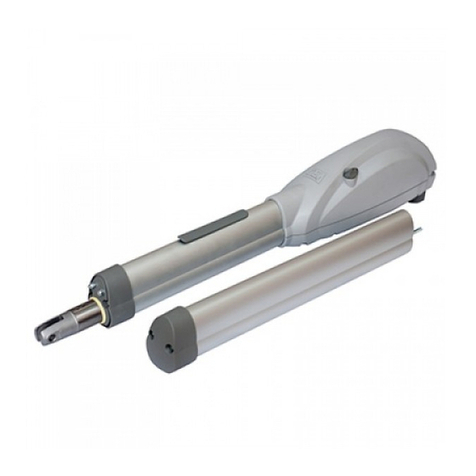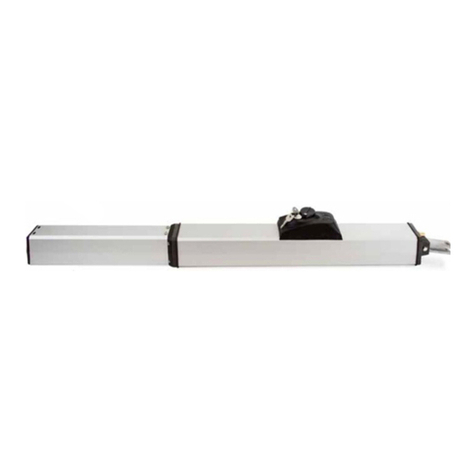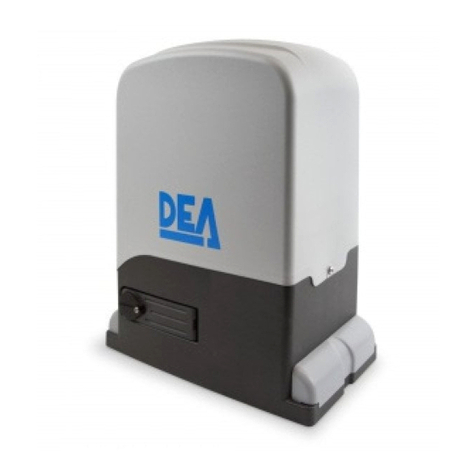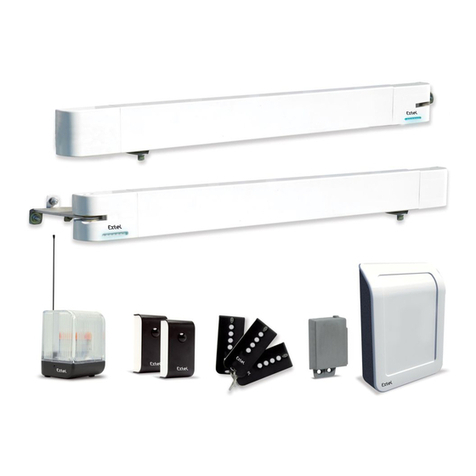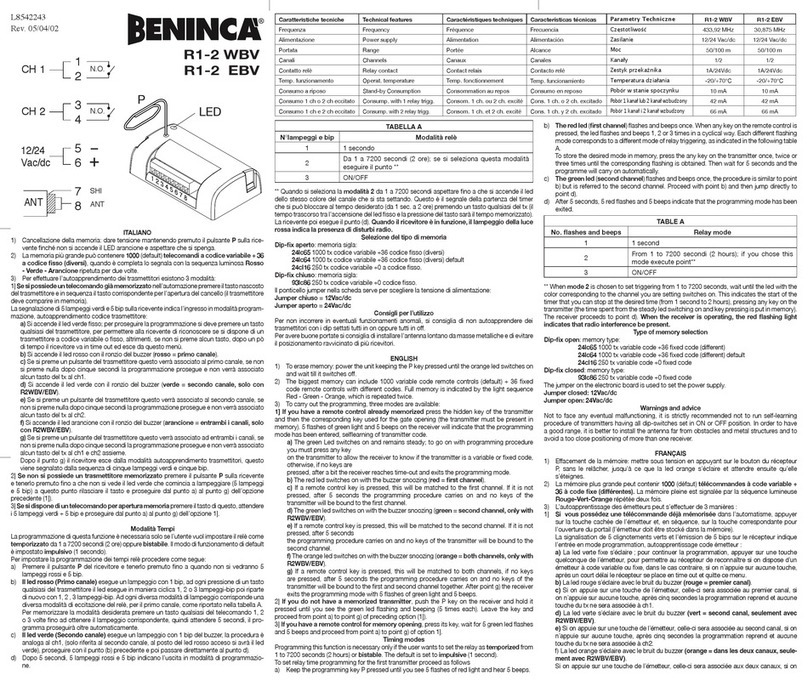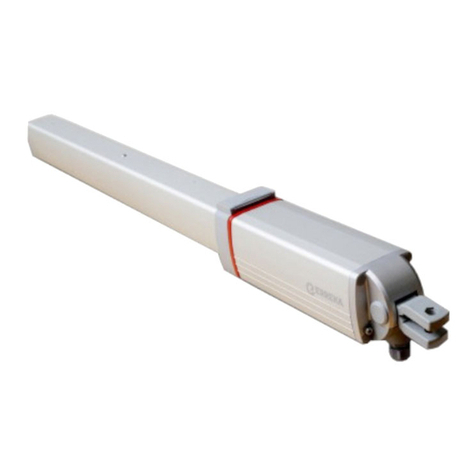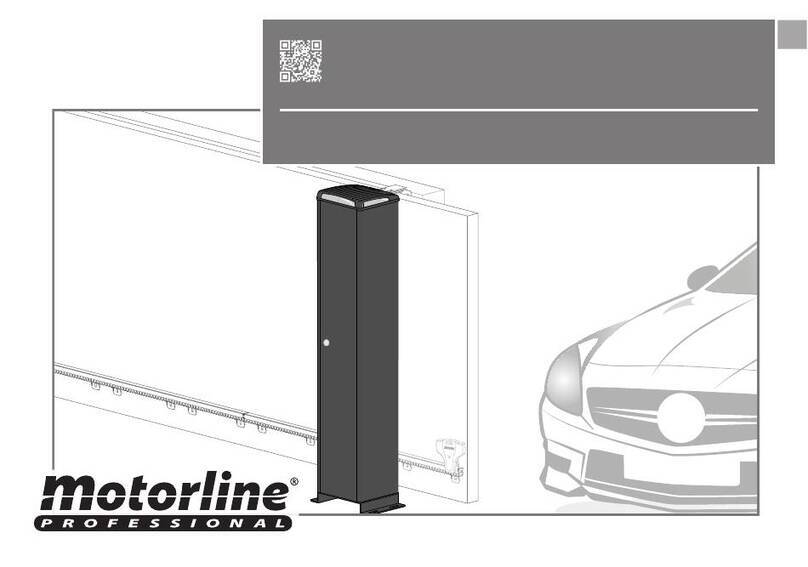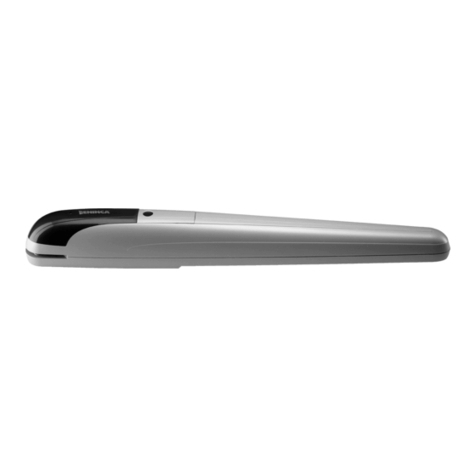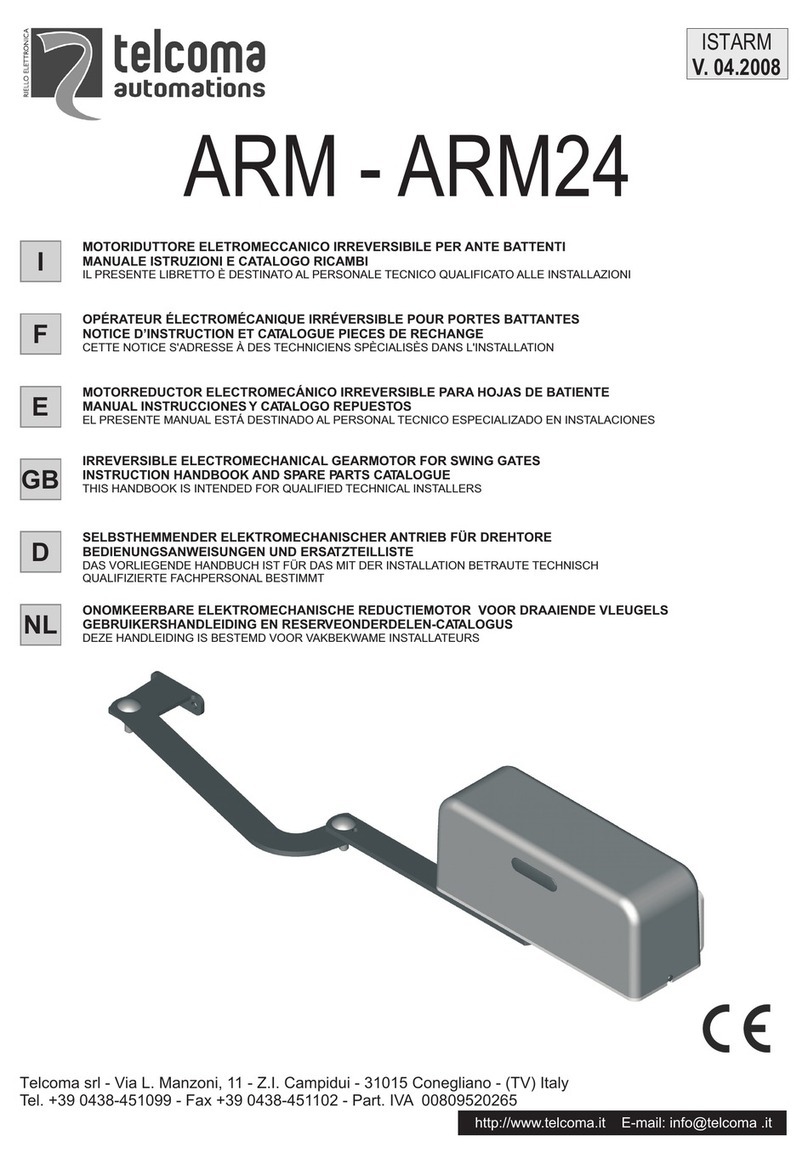
LOOK
Istruzioni d’uso ed avvertenze ad utilizzo
esclusivo di personale qualificato
4
4.5. Istruzioni per eseguire senza rischio
1 2 3 4
800
600
400
200
m
350, 351, 352, 371, 372
Kg
355, 356
373, 374
Grafico “LUNGHEZZA - PESO”
ATTENZIONE Per i modelli reversibili, a parità di lunghez-
za dell’anta, ridurre di 1/3 il peso ammissibile massimo della
porta rispetto a quanto indicato nel grafico “lunghezza-peso.
ATTENZIONE Se la lunghezza dell’anta è maggiore ai 2 mt
o se si utilizzano modelli reversibili è necessario installare l’elet-
troserratura per il blocco del cancello in posizione di chiusura.
4.5.1 Installazione, montaggio e smontaggio
Per una soddisfacente posa in opera del prodotto è impor-
tante:
• definireilprogettocompletodell’aperturaautomatica(fare
riferimento anche a “6 Assieme completo della chiusura); in
particolare, dopo aver valutato con attenzione le caratteri-
stiche dei supporti e del cancello designare tipo e posizione
degli attacchi in funzione anche dell’angolo di apertura che
si vuole ottenere (vedi F2, F3 pag. 38, 39).
• accertare che le condizioni meccaniche della porta siano
buone e tali da consentirne la motorizzazione in sicurezza.
Verificarne inoltre la corretta bilanciatura, ovvero che scorra
liberamente sui propri cardini e che una volta arrestata, in
una qualsiasi posizione della propria corsa, ne mantenga lo
stazionamento.
Il fissaggio degli attacchi va eseguito con particolare attenzione
sia sul pilastro che sul cancello ecco le misure consigliate da DEA
System (vedi F3 pag. 39). Fare particolare attenzione all’allinea-
mento orizzontale tra attacco posteriore ed attacco anteriore.
Considerazioni generiche per stabilire le misure di installazione:
• La somma delle quote A+B per aperture a 90° é pari alla
corsa dello stelo C.
•Peraumentarel’ampiezzadell’apertura:A+B<C.
•QuoteAeBinferioridaquelleconsigliatecomportanouna
velocità tangenziale dell’anta maggiore.
• Quote A e B discostate di oltre 5cm da quelle consigliate
comportano l’impossibilità della regolazione dei finecorsa
(dove previsti).
Per l’installazione dell’automatismo procedere come segue:
• Saldareoavvitarealpilastrol’attaccoposteriorenellaposi-
zione prefissata.
• MontareLOOKall’attaccoposterioreconl’appositoperno
• Eseguire l’operazione di sblocco manuale (vedi paragrafo
4.5.3) ed estrarre completamente lo stelo fino alla sua battuta.
• RibloccareLOOKefarrientrarelostelodicircamezzogiro.
• Fissarel’attaccoanterioreallostelodiLOOKconl’appositoperno.
• MantenendoLOOKinposizioneorizzontalesaldareoavvitare
alla porta l’attacco anteriore (con la porta totalmente chiusa).
• Eseguire l’operazione di sblocco e far compiere manual-
mente una manovra di completa apertura e chiusura per
verificare che il movimento sia libero e privo di attriti (con
eventuale copristelo montato).
(ATTENZIONE: è possibile che siano necessari dei fazzoletti di
rinforzo, da saldare agli attacchi, per conferire alla struttura una
sufficiente resistenza meccanica)
(ATTENZIONE: Ingrassare i perni prima del loro montaggio)
• Nelleversionicheprevedonoilcopristelodopolaregolazionedei
finecorsa procedere al suo montaggio come illustrato a pag. 34.
4.5.2 Messa in funzione e regolazione
ATTENZIONE Durante la fase di collegamento, vincolare
mediante fascette i conduttori in prossimità di morsetti e con-
nessioni elettriche, inoltre se possibile, sguainare adeguata-
mente i cavi per evitare conduttori troppo lunghi.
LOOK va collegato elettricamente ad una centrale di co-
mando DEA SYSTEM; fare riferimento alle istruzioni di tale
dispositivo per ulteriori informazioni.
Per il cablaggio elettrico di LOOK è necessario procedere come
segue (vedi anche pag. 33):
Versione 24V/230V standard
• Smontarelacoperturainplasticapostasullapartesottostan-
te di LOOK agendo sulle tre viti.
• Aprireunodeiquattrofori abbattibili posti sulla copertura
stessa, sciegliendo se si preferisce l’uscita del cavo verso il
basso o verso la parte posteriore.
• Introdurreneiforiappenapraticatiilpressacavoindotazio-
ne e fissarlo con la relativa ghiera.
• Utilizzareuncavo4x1mm²(permotori230V)o2x1,5mm²
(per motori 24V) flessibili da esterno (es. H05RN-F) e devo-
no provenire direttamente dalla centrale di comando senza
giunture e scatole di derivazione.
ATTENZIONE: Non sguainare eccessivamente i cavi di alimentazione.
• Eseguire il collegamento del motore come indicato nello
schema a pag.5.
Versione 24/230V con finecorsa
• Seguireleindicazionidellaversionestandardperilcollega-
mento dell’alimentazione del motore.
• Aprireunsecondoforoabbattibilenellacoperturainplastica
e applicare il secondo pressacavo (M16) in dotazione.
• Utilizzareuncavo3x0,75mm²(nonfornito)econsultarelo
schema a pag.5 per il corretto cablaggio dei finecorsa (trat-
teggio) alla centrale di comando.
Versione 230V con encoder
• Seguireleindicazionidellaversionestandardperilcollega-
mento dell’alimentazione del motore.
• Aprireunsecondoforoabbattibilenellacoperturainplastica
e applicare il secondo pressacavo (M16 ridotto) in dotazione.
• Utilizzareuncavo3x0,75mm²LiYY(nostroarticolo182021
non fornito) e consultare lo schema a pag.5 per il corretto
cablaggio dell’encoder alla centrale di comando.
• Utilizzareilcavettoconconnettorepanduitfornitonelkitpercol-
legare il cavo precedentemente utilizzato alla centrale di coman-
do, servendosi della morsettiera 3 poli fornita nella confezione.
ATTENZIONE: Nel caso di motori 230V collegare il conduttore di
terra all’apposito morsetto(vedi pag.33) avendo l’accortezza
di mantenerne la lunghezza superiore a quella dei condutto-
ri attivi in modo che in caso di fuoriuscita del cavo dalla sede
di fissaggio i conduttori attivi siano i primi a tendersi.
ATTENZIONE: Rispettare la polarità Fase-Neutro della tensione
di rete come indicato nei manuali d’uso delle centrali di co-
mando abbinabili a LOOK.
• Montarelacoperturainplastica,avendolacuranelrichiu-
derla, di accertare che i cavi elettrici non possano entrare in
contatto con parti in rotazione del motore.
